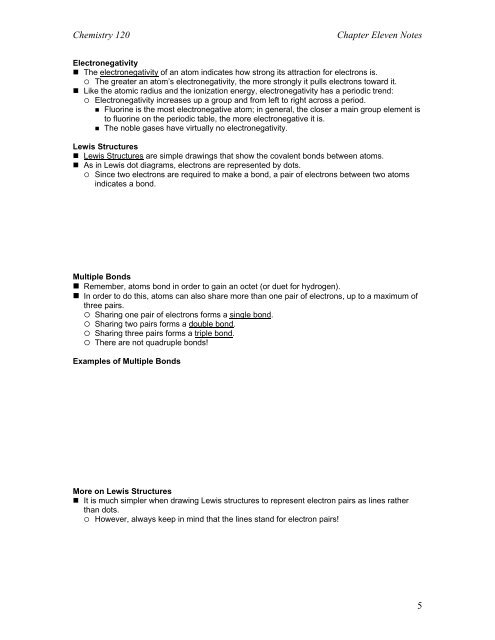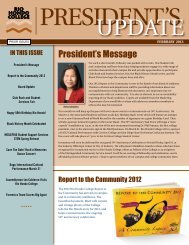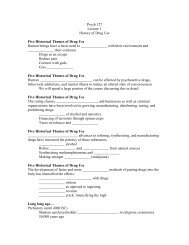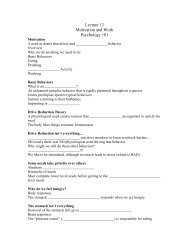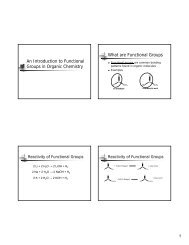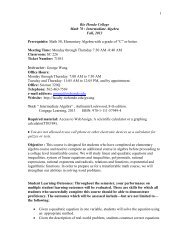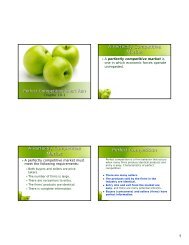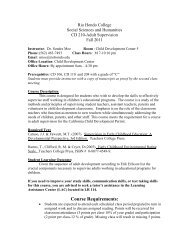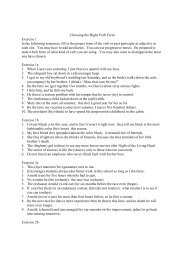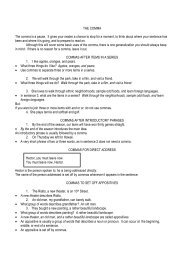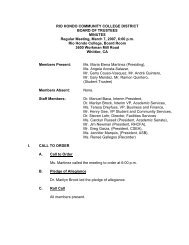You also want an ePaper? Increase the reach of your titles
YUMPU automatically turns print PDFs into web optimized ePapers that Google loves.
<strong>Chemistry</strong> <strong>120</strong><br />
Chapter Eleven <strong>Notes</strong><br />
Electronegativity<br />
• The electronegativity of an atom indicates how strong its attraction for electrons is.<br />
◦ The greater an atom’s electronegativity, the more strongly it pulls electrons toward it.<br />
• Like the atomic radius and the ionization energy, electronegativity has a periodic trend:<br />
◦ Electronegativity increases up a group and from left to right across a period.<br />
• Fluorine is the most electronegative atom; in general, the closer a main group element is<br />
to fluorine on the periodic table, the more electronegative it is.<br />
• The noble gases have virtually no electronegativity.<br />
Lewis Structures<br />
• Lewis Structures are simple drawings that show the covalent bonds between atoms.<br />
• As in Lewis dot diagrams, electrons are represented by dots.<br />
◦ Since two electrons are required to make a bond, a pair of electrons between two atoms<br />
indicates a bond.<br />
Multiple Bonds<br />
• Remember, atoms bond in order to gain an octet (or duet for hydrogen).<br />
• In order to do this, atoms can also share more than one pair of electrons, up to a maximum of<br />
three pairs.<br />
◦ Sharing one pair of electrons forms a single bond.<br />
◦ Sharing two pairs forms a double bond.<br />
◦ Sharing three pairs forms a triple bond.<br />
◦ There are not quadruple bonds!<br />
Examples of Multiple Bonds<br />
More on Lewis Structures<br />
• It is much simpler when drawing Lewis structures to represent electron pairs as lines rather<br />
than dots.<br />
◦ However, always keep in mind that the lines stand for electron pairs!<br />
5


